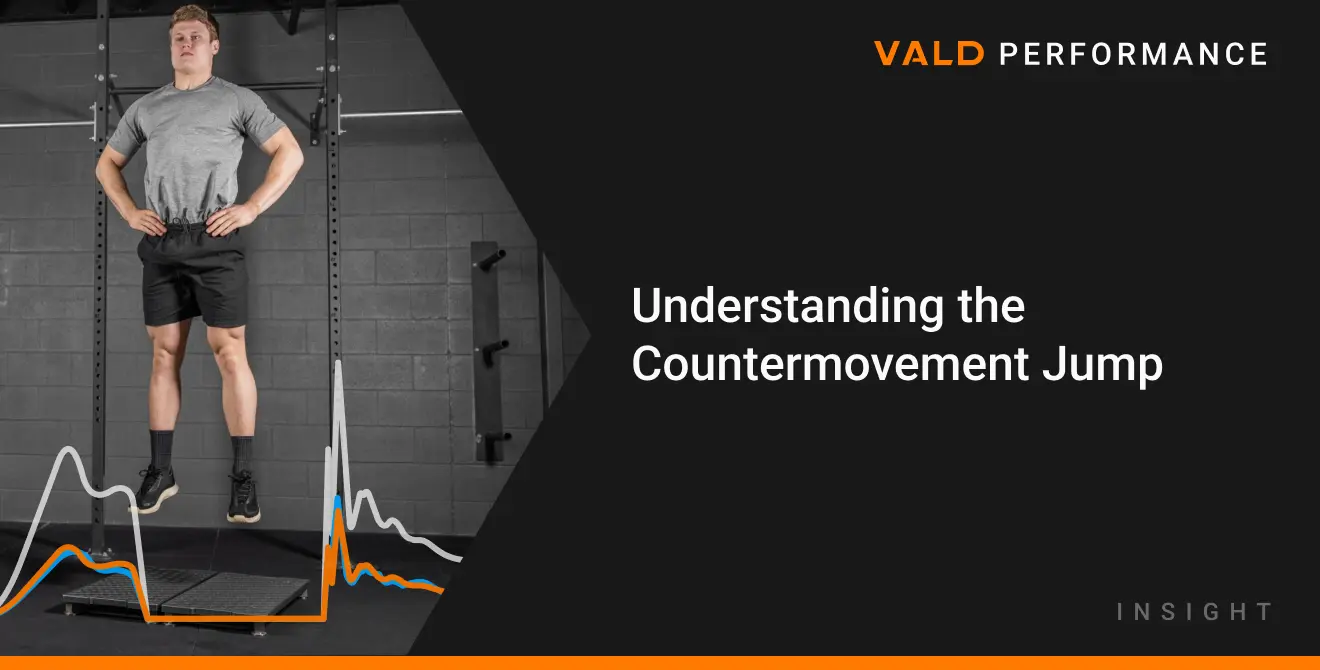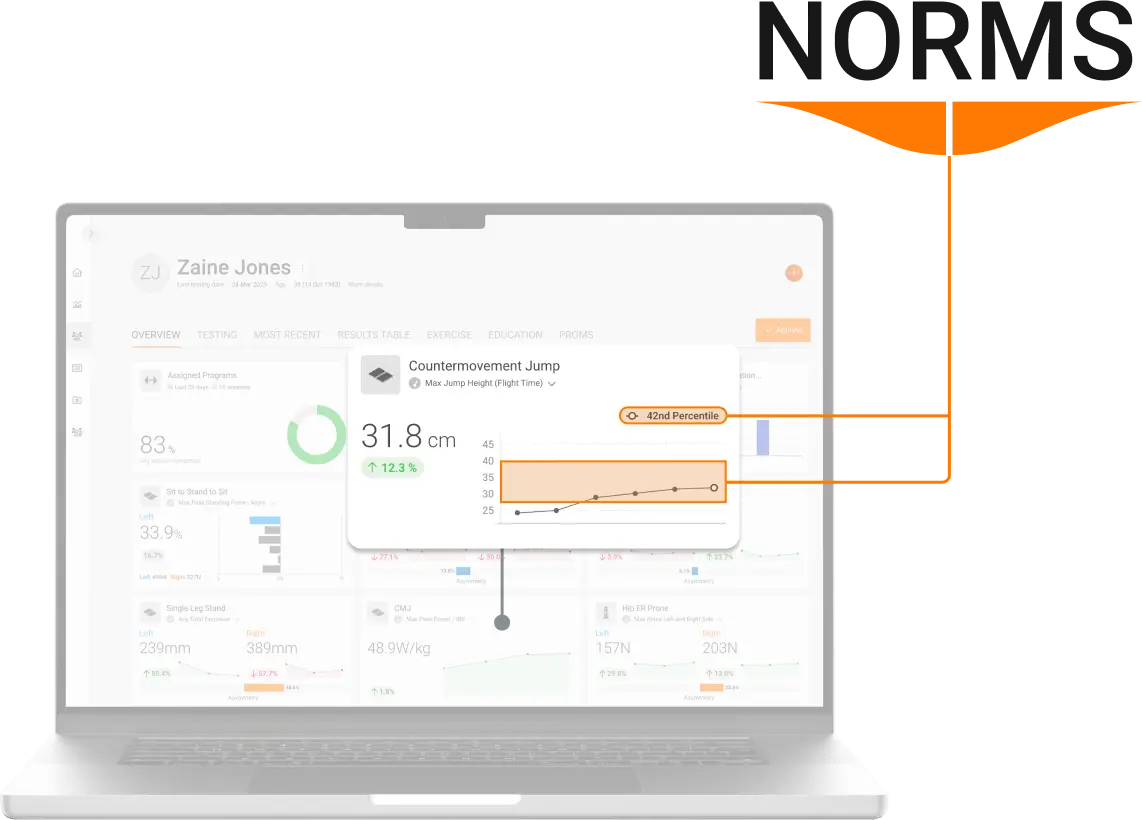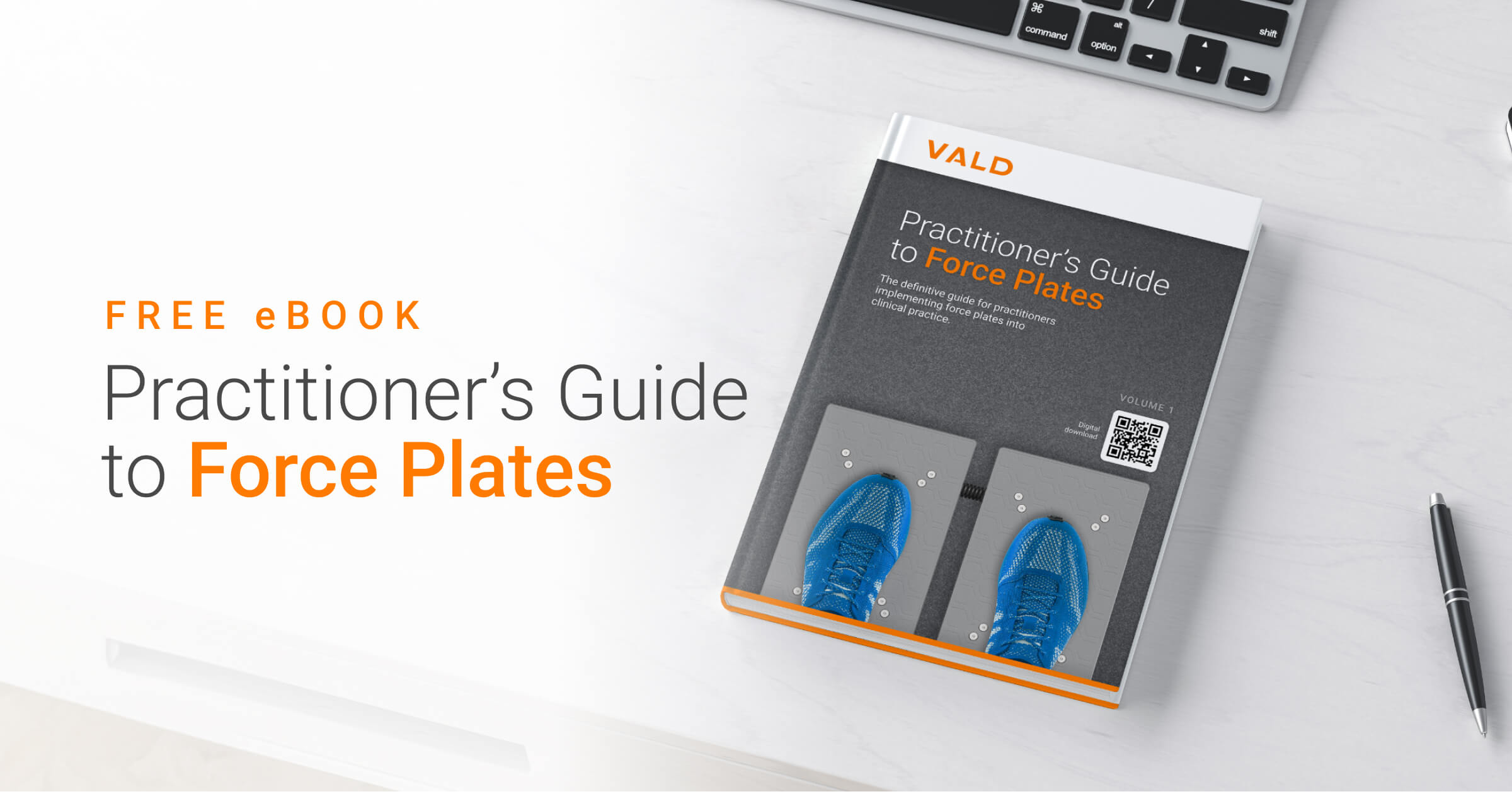Understanding the Countermovement Jump

What is a Countermovement Jump?
The countermovement jump (CMJ) is arguably the most popular neuromuscular and physical performance test in the world. It is a fast and effective assessment of the lower limbs that correlates to a myriad of performance qualities present in countless sporting actions.
A CMJ is a vertical jump that involves a downward movement (countermovement) before an upward leap. This pre-jump dip is a key characteristic that differentiates it from a squat jump (SJ), where the athlete starts from a stationary squat position.
Why use a Countermovement Jump?
The CMJ is a fundamental movement in sport, training and rehabilitation, offering valuable insights into an athlete's explosive strength, neuromuscular efficiency and overall functional capacity. As practitioners, understanding the mechanics and applications of the CMJ can significantly enhance assessment and training methodologies. This article aims to delve into the nuances of the CMJ, discussing its biomechanics, assessment techniques and its relevance to practice.
The countermovement jump offers valuable insights into an athlete's explosive strength, neuromuscular efficiency and overall functional capacity.
The CMJ is not just a performance measure but also a diagnostic tool. Health professionals (such as physiotherapists or physical therapists) can assess a patient’s or athlete's lower limb function through a variety of metrics like power, force asymmetry or movement strategy. Tools such as force plates and motion capture systems can provide quantitative data to highlight nuanced force, time and displacement characteristics, giving insight into hundreds of trackable metrics.
Tools such as force plates and motion capture systems can provide quantitative data on jump height and ground reaction forces, as well as hundreds of additional metrics.
How to Perform a Countermovement Jump
The CMJ exploits the stretch-shortening cycle (SSC) – a powerful combination of active musculature and storage of elastic energy in the tendons.
When a person dips down before the jump, tendons attaching to the quadriceps, hamstrings and glutes are stretched, storing elastic energy by deforming under load. During the upward phase, this elastic energy is returned to the muscles in the form of amplified power output. This movement pattern combines both eccentric and concentric muscle actions, however, the magic of the SSC happens in the transition between the two. The “amortization” phase is a rapid instant in time where the “dip” is reversed, utilizing the stored energy to amplify the muscular power generated to propel the body upwards.
Protocol for performing a CMJ:
- Stand upright and completely still with feet hip-width to shoulder-width apart and hands on hips.
- Keeping the chest up and looking forward, begin the countermovement by dropping into a squat position at a self-selected depth.
- Without pausing, spring back up into a maximal-effort vertical jump.
- Land in a safe and controlled manner.
- Reassume the starting position and repeat for as many repetitions as desired. Three reps are the most common protocol.
Countermovement Jump Protocol
Common Mistakes or Poor Technique of CMJ
- Shifting weight, talking or otherwise moving during weighing and/or immediately prior to start of movement. Both of these periods require complete stillness to ensure accurate readings.
- Releasing hands from hips can create excess momentum, making the test less reliable.
- Performing a slow countermovement can reduce the effect of the SSC.
- Excessively bringing knees up or feet forward in the air can affect landing.
- Landing with knees bent can artificially exaggerate the jump height measurement for jump mats and force plates.
- Losing balance on landing can artificially exaggerate asymmetry measurements.
Some force plates (such as ForceDecks) can calculate jump height using the “Impulse-Momentum equation.” This calculates jump height based on specific impulse metrics prior to take-off, reducing variability in the measure due to flight time or landing errors.
Varieties of a CMJ exist, however, a CMJ with hands on hips is the most common test as it removes the influence of the upper body. Although a CMJ with arm swing (also known as an “Abalakov jump”) can result in a more than 10% increase in jump height, it also has the potential to add variability to the jump and “hide” deficits when athletes are fatigued.
a CMJ with hands on hips is the most common test as it removes the influence of the upper body.
Key Aspects in the CMJ
Stretching of Muscles: The initial dip phase stretches the muscles, priming them for a forceful contraction.
Stretch-Shortening Cycle (SSC): This refers to the fast transition from the eccentric pre-stretch to the concentric action, crucial for generating maximum force.
Neuromuscular Strategy: Efficient motor unit recruitment and speed of muscle contractions are essential for optimal performance in the CMJ.
Joint Kinematics: The CMJ involves multiple joints, including the ankles, knees and hips, each playing a pivotal role in the movement execution.
Phases in a Countermovement Jump
Key Parameters in CMJ Assessment
Clinical Relevance in Practice
The CMJ is highly relevant in both sports performance and rehabilitation contexts.
Common applications in sports:
- Talent identification
- Monitoring training progress
- Fatigue monitoring
- Injury prevention
Common applications in rehabilitation:
- Assessing recovery stages for criteria-based rehabilitation.
- Designing targeted interventions.
- Assessing functional capacity.
- Evaluating return-to-work readiness.
- Evaluating return-to-play readiness.
Injury Risk Reduction Strategies and Rehabilitation: Understanding the biomechanics of the CMJ can help identify biomechanical deficits and asymmetries, which are often seen in athletes experiencing pain and during rehabilitation.
Performance Enhancement: Practitioners can use CMJ analysis to design sport-specific training programs that focus on enhancing lower limb power and efficiency.
Return-to-Play Assessment: The CMJ can be an objective measure to assess an athlete's readiness to return to sport post-injury.
Key Landmarks in a Countermovement Jump
CMJ vs Squat Jump (SJ)
A key delineation between the CMJ and SJ is the SSC. The dip phase of a CMJ creates downward momentum that the participant must redirect upwards to execute the jump. As mentioned previously, this downward momentum is a key point of performance that allows for greater force production and ultimately, jump height. As a key consideration, the countermovement jump assesses global output in a maximal effort jump, whereas the SJ assesses a component or specific qualities (concentric impulse) contribution to jump performance.
CMJ vs Drop Jump vs CMRJ: Which is better?
The CMJ, Drop Jump (DJ) and Countermovement Rebound Jump (CMRJ) all have their place in testing athletes. Each has pros and cons which are explained in more detail here.
Using Technology to Assess the CMJ
A wide range of technology is available to evaluate the CMJ and allow practitioners to assess the performance from the jump. Depending on the technology, the available measurements will differ from simple output measures to more in-depth strategy-based metrics.
Force Plates
Force plates allow in-depth analysis of the CMJ through all phases; eccentric, concentric and landing phases. The popularity of dual force plates (individual left and right plates) has rapidly increased in recent years due to their portability, accessibility, ease of use, time efficiency and the in-depth metrics they can calculate and report on.
Practitioners can assess the forces generated by each limb during all phases of the jump to identify injury risk and objectify the rehab process. A limb symmetry index (LSI) is often set as a marker that must be achieved before progressing to the next phase of rehabilitation. While progression, regression and discharge from rehabilitation will ultimately be dictated by the scientific evidence, the provider’s expertize and the patient’s values, a target LSI value often hovers between 5-15%.
| Force Plate Metric | Common Applications |
| Jump Height | Fatigue monitoring and longitudinal adaptations |
| Peak Landing Force Asymmetry | Return to play readiness |
| Time to Take-Off | Fatigue monitoring and assessment of "jump strategy" |
| RSI-mod | Fatigue monitoring |
Force plates allow practitioners to make multiple types of comparisons with their client’s data. Side-to-side asymmetries allow for relative comparisons of how well one limb is performing an exercise compared to the other. Whereas normative datasets, such as VALD's Norms, allow practitioners to compare their client’s abilities to a reference standard that is compiled from millions of other test results from similar populations.

Training Considerations and Progressions
Incorporating CMJ training into rehabilitation and conditioning programs requires a structured approach. Initially, the focus should be on mastering the execution of the task through basic biomechanics and sufficient time spent practicing the jump. Progressively, variables like resistance can be added or subtracted to enhance specific qualities of the client such as strength and power.
Key Training Tips
Technique First: Emphasize form to maximize effectiveness and load tissues appropriately.
Progressive Overload: Gradually increase intensity and complexity to challenge the athlete. While adding weight to a CMJ may be a viable option for your client to progress, minimizing or maximizing ground contact times and countermovement depth can also be methods of altering the load experienced in a CMJ.
Individualization: Tailor the training to the athlete's specific needs, abilities and goals.
Comprehensive Approach: Combine CMJ training with other strength, flexibility and balance exercises for holistic development.
Conclusion
Whether it is in guiding an athlete back from injury or pushing the limits of their physical capabilities, the CMJ stands out as being simple, efficient and effective in exploring the complex and dynamic nature of human movement and performance.
Performing a CMJ with technology (such as force plates) further enhances the value that this test can provide. Force plates enable in-depth analysis as well as powerful data visualization capabilities enhancing the experience for both the practitioner and the person being assessed.
If you would like to know more about the CMJ or the value of implementing technology into your organization, please reach out.

